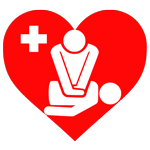Top 5 Myths About CPR: Debunking Common Misconceptions

Understanding the Realities of CPR
Myth 1: Only Medical Professionals Should Perform CPR
Reality: While medical professionals are trained to perform CPR, anyone can learn and perform it. In fact, bystander CPR can significantly increase the chances of survival for someone experiencing cardiac arrest. CPR training is accessible to everyone, and knowing how to perform it can make you an invaluable first responder in an emergency.
Myth 2: Performing CPR Can Cause More Harm Than Good
Reality: The fear of causing harm is a common concern, but performing CPR on someone who isn’t breathing or doesn’t have a pulse is unlikely to cause further injury. In fact, the risks of not performing CPR far outweigh the potential for harm. Effective CPR can sustain life until professional medical help arrives, giving the victim a better chance of survival.
Myth 3: You Need to Perform Mouth-to-Mouth Resuscitation
Reality: While mouth-to-mouth resuscitation can be beneficial, it’s not always necessary. Hands-only CPR, which involves chest compressions without rescue breaths, has been shown to be effective, especially for untrained bystanders. The key is to maintain a steady rhythm of compressions to keep blood circulating.
Myth 4: CPR Can Only Be Performed on Adults
Reality: CPR techniques can be adapted for people of all ages, including infants and children. The principles are the same, but the techniques differ slightly in terms of the force and depth of compressions. CPR training courses cover these variations, ensuring that you’re prepared to assist anyone in need, regardless of their age.
Myth 5: If the Heart Restarts, CPR Should Stop Immediately
Reality: It’s important to continue CPR until professional medical help arrives and takes over. Even if the person shows signs of life, such as breathing or movement, it’s crucial to keep performing CPR until emergency responders can assess and stabilize the victim. Stopping CPR too soon can lead to a relapse into cardiac arrest.
Conclusion
Understanding the realities of CPR and debunking these common myths can empower more people to learn and perform this life-saving technique. By educating yourself and others, you can help create a community of prepared and confident responders. Remember, effective CPR can make the difference between life and death, and dispelling these misconceptions is the first step toward widespread awareness and action.
Visit our blog for the latest articles, reviews, expert tips, and essential life saving skills.
#CPRMyths #EmergencyPreparedness #LifeSavingSkills



Leave a Reply